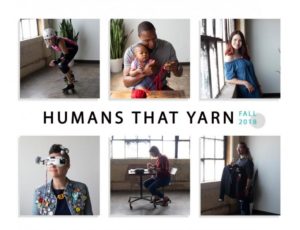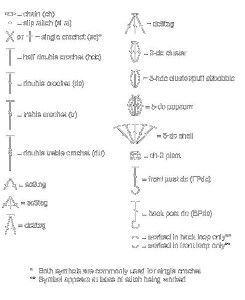 Humans that yarn. Sounds like an interesting caption, but to the Craft Yarn Council it is a bit more than that.
Humans that yarn. Sounds like an interesting caption, but to the Craft Yarn Council it is a bit more than that.
The Craft Yarn Council is a nonprofit organization that is designed to promote all things yarn that includes certifying knitting and crochet instructors….it is an interesting course that I completed of crochet in 2012, and really has helped me to teach crochet more effectively. (You can find information about the program here). The Humans that Yarn campaign is an effort by this organization to hear the voices of those that craft with yarn.
 Often as crocheters it seems like we are defined by the fact that we are not knitters, and this campaign gives us an opportunity to talk about who we are and what yarn means to us, so I thought I would share my thoughts.
Often as crocheters it seems like we are defined by the fact that we are not knitters, and this campaign gives us an opportunity to talk about who we are and what yarn means to us, so I thought I would share my thoughts.
For me I really do not remember a time in my life without yarn somewhere around. As I have talked about in the past I taught myself to crochet at the age 10 from a book, but it wasn’t from a true desire to crochet as much as it was to learn and create. It just happened that I had access to yarn, hooks and the book.
Most of my yarn came from others. Other people would give me there left over scraps and partial skeins. There was a time when I finally committed to creating my first afghan that I convinced my mom to allow me to purchase some yarn. I remember spending time going over patterns finding the one that I wanted to create. I remember standing in the aisle of the store putting various combinations of yarn together to find the perfect colors. I remember asking my mom’s advice on the color selection, she after all as in many different art classes at the time.
Yet yarn is not just a memory for me. It is a way of moving my hands and keeping my mind flowing it is being productive in even the most likely of times.
It might be that I tend to want to do or experience things that no one would quite expect to look at me. No one in grade school would expect me to be crocheting, I had many friends in high school look at me like I was crazy when they found out…although many still have the afghan I made them. I guess I liked a bit of the awe factor. Not fitting into any particular mold…I still find it appealing.
People that know me are no longer surprised by the crocheting, but they tell me they are inspired by my designing, teaching and taking it on as a business. The title “Crochet Designers” does garner surprise from people I meet, as they never thought of any career like it.
So I guess, my easiest summation for Who am I? when considering Humans that Yarn, I am contrite wanting to be different and a bit surprising while utilizing a common craft.
Share your #HumasthatYarn story, Who are You?

